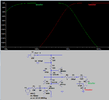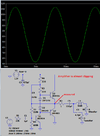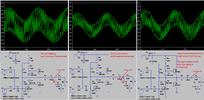learning
Member
Could you tell me how to power up two stereo audio amplifiers from a single source of power supply?
Configuration:
4 x Woofers (4 ohm/20 watts)
4 x Tweeters (4 ohm/40 watts)
4 x 2-way Crossover Network (40 watts).
Total wattage is 480 watts
Please tell me how I can feed the power supply to these two stereo amplifiers (240 watts each) from a single power supply source like an AC adaptor (24V / 6A) only. I don't like to use any kind of transformer for it.
Just help me!
Configuration:
4 x Woofers (4 ohm/20 watts)
4 x Tweeters (4 ohm/40 watts)
4 x 2-way Crossover Network (40 watts).
Total wattage is 480 watts
Please tell me how I can feed the power supply to these two stereo amplifiers (240 watts each) from a single power supply source like an AC adaptor (24V / 6A) only. I don't like to use any kind of transformer for it.
Just help me!
Last edited:




